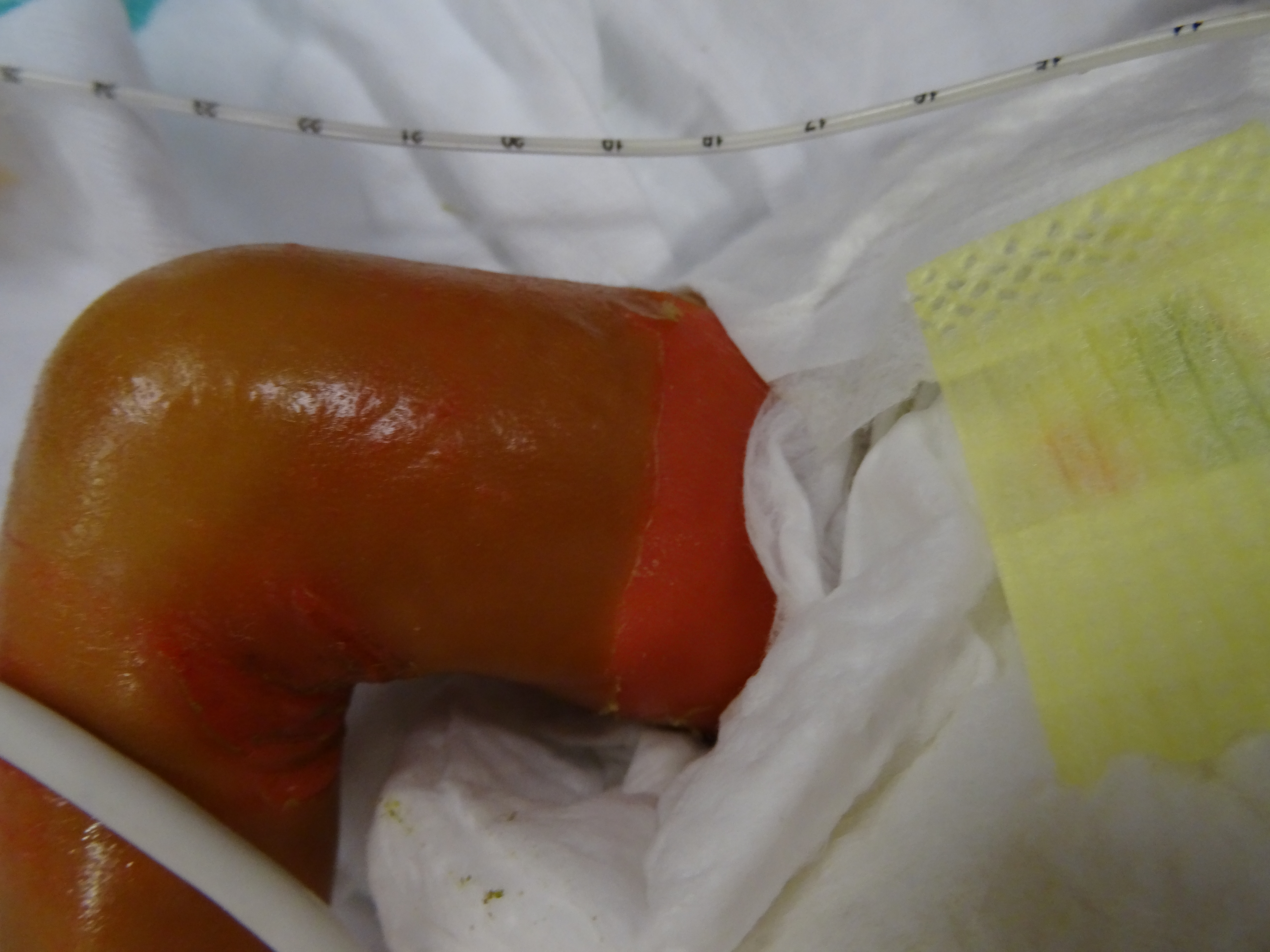see also congenital ichtyosis
Rare: 1/50,000 to 1/100,000 births. Common neonatal phenotype of many forms of congenital ichthyosis : it is most often a congenital ichthyosis due to a mutation of the TGM1, ALOXE3 or ALOX12B gene. In about 10 % of cases, spontaneous healing occurs with near-normal skin: this form is called 'lamellar exfoliation of the newborn'.
Mortality in large centres is about 5 %: the main causes are infection and fluid disorders.The newborn's whole body is covered with a membrane that has the consistency of rigid cellophane.
The rigidity of this membrane can cause:
- pseudocontracture of the limbs and the extremities with risk of ischemia
- ectropion and eclabion (outward turning of the lips)
- absence of eyelashes
- hypoplasia of the cartilages of the nose and ears.
Underlying erythroderma is present where the membrane is cracking. The membrane usually disappears within 3-4 weeks but one needs sometimes to remove parts of it to avoid local ischemia or facilitate ventilation. This membrane is usually removed with ease as soon as a cleavage plane with the underlying skin is found.
This abnormal skin barrier exposes infants to hypothermia, caloric and hydroelectrolytic losses and risk of infection.

Treatment: (see also http://www.firstskinfoudation.org)
- incubator with at least 60 % humidity
- sterile care
- massage of the skin with fatty ointments such as petroleum jelly or Aquaphor ®
- significant risk of systemic toxicity by dermal absorption: avoid alcoholic, iodine-based urea and salicylic acid solutions
- bath with water and mild soap (ex: Dove ®, Cetaphil ®)
- no dressing adheres: use the self-adhesive bands (ex: Coban ®) or strips of gauze
- prevent compression and ischemia if the membrane is too rigid
Anesthetic implications:
difficult peripheral venous access ; difficulties to secure catheters and intubation tube (or any other tube); risk of hypothermia; risk of difficult intubation due to a small mouth opening and limitation of neck mobility.
References :
- Rado R, Ellis LZ, Gamble R, Funk T et al.
Collodion baby : an update with a focus on practical management.
J Am Acad Dermatol 2012; 67: 1362-74.
- Craiglow BG.
Ichthyosis in the newborn.
Sem Perinatol 2013; 37: 26-31.
Updated: October 2019